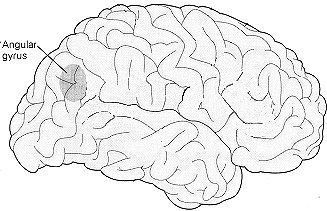|
The 40 Hz modulated signal is based on the observation that a 40 Hz signal
is evident in EEG recordings taken both during normal, waking consciousness, and during REM sleep. It doesn't appear
in non-REM sleep.
It has been called the " binding factor " for human consciousness, including the most common states of
consciousness.
In a normal healthy brain, there's not much point in putting in a 40 Hz signal. That particular wavelength is already
occupied with the brain's own 40 Hz signal. Inputting such a signal will probably not have much effect. The idea
in using this signal to induce altered states is to modulate that signal so as to alter the state of consciousness.
A few people have tried this signal, and the preliminary reports are very encouraging. As a single signal or combined
with others, it seems to have a good potential for altering states of consciousness.
A lot depends on where you place the coils when you're using it. A good starting point, and one that has been extensively
used with other signals in laboratory settings, is to put the coils about an inch above each ear (a bilateral temporal
lobe presentation). Such a presentation would not be targeted at any specific experience, but would rather elicit
experiences that an individual is most prone to.
For those interested in out-of-body experiences, one coil placed over the angular gyrus might be sufficient to
induce effects that progress toward an OBE. One such report has already been received. The person reporting had
experience with OBEs in the past. It may be that, for some individuals, this presentation will not induce OBEs,
but will rather increase their responsiveness to the exercises (such as guided visualization and imaginative practices)
popularly taught as OBE techniques.
 ...... ......
An alternative presentation with a chance of inducing and out-of-body experience
using this signal might be one coil in front of and below the right ear, and one coil over the angular gyrus on
the right side. Having the two coils located there will include much of the parahippocampal region, the right temporal
lobe, and the region between the temporal, parietal, and occipital lobes. All of these areas have been implicated
in OBEs, including observations (published in the 1950s) by the great neurosurgeon Wilder Penfield, recently by
Dr. Olaf Blanke, and by Dr. M.A. Persinger. This signal has been used by very few people, and you should consider
it as an untested signal, because reports from those using a are not yet numerous enough to justify generalizations
from them. The few reports from sessions using it tend to validate the hypothesis on which it's based.
This signal has a constant tone. The correct calibration will
be 10mG for either channel, when measured from one coil.
This signal can be used over both hemispheres, or either one by itself. If you are going to try one hemisphere,
you might like to begin with the right. NOTE: If you find that you have words on the tip of your tongue that don't
come out quickly, then this signal might not be for you.
The signal was developed to facilitate out-of-body experiences, and out-of-body meditation and/or visualization
techniques may meet with more success if done while falling to sleep, about 90 minutes after the session.As with
all new signals, begin with short sessions. If you choose to apply this to only one side of your head, it's best
to start with short sessions over each side.
If you experience any negative effects during or after a session using this signal over one side only, you can
apply it to the other side. Please report your experiences.
If you aren't comfortable using less well-tested signals, do not use this one.
|

|
|

|
|
Lissanjou display of a 40Hz tone
|
|
Lissanjou display of Modulated 40 Hz signal
|
This signal is based on a pattern developed in the Laurentian
University Behavioral Neurosciences program under the direction of Dr. M.A. Persinger, and is based on empirical
laboratory results obtained there.
|
|